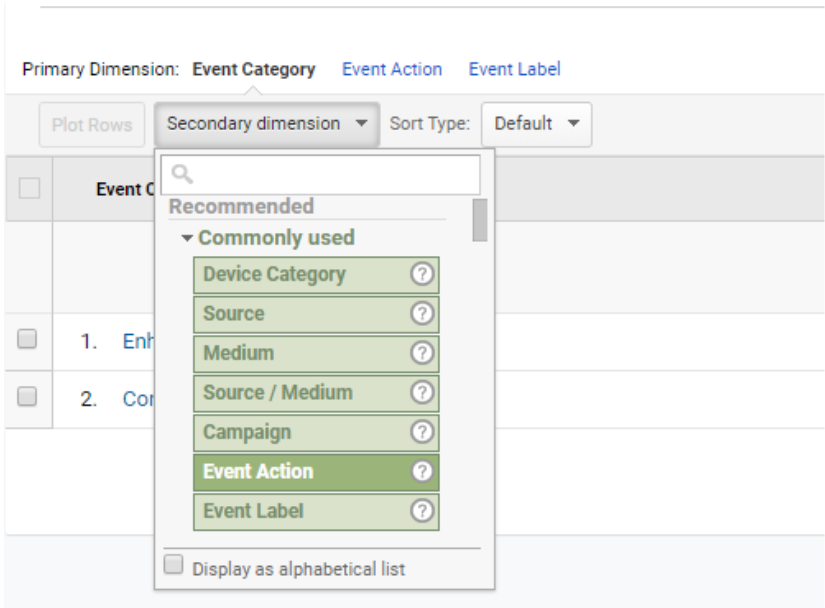Navigating the Midst of Second Measurement in Google Analytics: An In-depth Expedition on Its Functionality
Secondary measurements, though relatively straightforward at very first glance, nurture a wide range of untapped potential waiting to be taken advantage of. As we embark on this journey to check out the nuanced capability of additional measurements, we will certainly reveal just how this attribute can brighten patterns, unveil correlations, and eventually pave the method for notified decision-making in the digital landscape (what is a “secondary dimension” in google analytics?).
Recognizing Second Dimensions in Google Analytics

Comprehending just how secondary dimensions work is critical for leveraging the full power of Google Analytics. These dimensions assist you address more intricate inquiries about individual behavior and the efficiency of your internet site web content and marketing initiatives. As an example, you can utilize secondary dimensions to examine which browsers or devices are most typically utilized by site visitors who make an acquisition, or to contrast the bounce prices of various website traffic resources. By combining main metrics with additional dimensions, you can obtain beneficial understandings that drive notified decision-making and optimization methods - what is a “secondary dimension” in google analytics?.
Leveraging Second Measurements for Information Analysis
Building upon the fundamental understanding of how additional dimensions enhance information analysis in Google Analytics, the use of these added layers of information ends up being extremely important in removing valuable insights for notified decision-making and optimization methods. By leveraging second measurements, analysts can dig deeper right into the efficiency metrics by adding more context to the primary measurements, thus discovering concealed patterns and relationships that could not appear at initial glance. This deeper level of evaluation enables organizations to much better comprehend user behavior, recognize fads, and determine locations for enhancement.
Furthermore, secondary dimensions provide an even more detailed view of the information, allowing for segmentation based upon numerous parameters such as demographics, tools, website traffic resources, and a lot more. This segmentation assists in a more granular evaluation, allowing businesses to tailor their methods and campaigns to certain audience segments for boosted targeting and personalization. In essence, the strategic use secondary dimensions empowers organizations to make data-driven decisions that drive growth and success in the electronic landscape.
Advanced Methods for Second Measurement Application
Checking out elaborate approaches to harness the full possibility of additional measurements in Google Analytics raises the deepness and refinement of data analysis for strategic decision-making. One advanced strategy for carrying out additional dimensions is the usage of custom-made dimensions. Additionally, integrating second dimensions with innovative sections can offer also much more granular understandings by applying several layers of division to the data.
Interpreting Insights With Second Dimensions

When analyzing understandings via secondary measurements, it is vital to think about the context of the information and just how different measurements interact with each other. As an example, understanding which particular web traffic sources result in higher conversion prices or identifying which gadgets individuals prefer for making purchases can give actionable insights for enhancing marketing projects and enhancing general site efficiency. By very carefully checking out the information with second dimensions in mind, companies can make enlightened decisions that drive purposeful outcomes and boost their digital visibility.
Maximizing Performance With Secondary Measurements

One key means to maximize performance with secondary dimensions is by segmenting data more granularly. This allows you to visit the site isolate details variables this article that may be influencing your metrics and obtain a better understanding of what drives success or failure in your digital efforts. For instance, by incorporating secondary measurements such as 'device group' and 'touchdown web page,' you can pinpoint which gadget kinds are most effective for certain touchdown pages, enabling you to tailor your techniques as necessary.
Moreover, utilizing secondary measurements can assist you determine trends, patterns, and connections that may not appear when examining data with main measurements alone. This much deeper degree of analysis can cause even more educated decision-making and inevitably boost the total performance of your web site or electronic advertising and marketing campaigns.
Final Thought
In conclusion, additional dimensions in Google Analytics play a vital role in improving information evaluation and giving much deeper insights into internet site efficiency. By using advanced strategies and translating the information successfully, companies can maximize their methods and enhance total performance. Recognizing the capability of second dimensions is crucial for making right here notified choices and driving success in the digital landscape.
By leveraging second dimensions, analysts can dive much deeper right into the efficiency metrics by including even more context to the main dimensions, hence revealing hidden patterns and correlations that might not be noticeable at initial glance. One advanced method for carrying out secondary measurements is the use of customized measurements.Having actually understood sophisticated methods like custom dimensions and regex for secondary measurement implementation in Google Analytics, the following crucial action is translating the beneficial understandings obtained with these innovative data division approaches. Analyzing insights via additional measurements includes analyzing the relationships between the second and key dimensions picked, uncovering patterns, trends, and connections that might not be immediately obvious when looking at the information in its totality.When translating understandings with additional measurements, it is essential to take into consideration the context of the data and exactly how various dimensions interact with each various other.